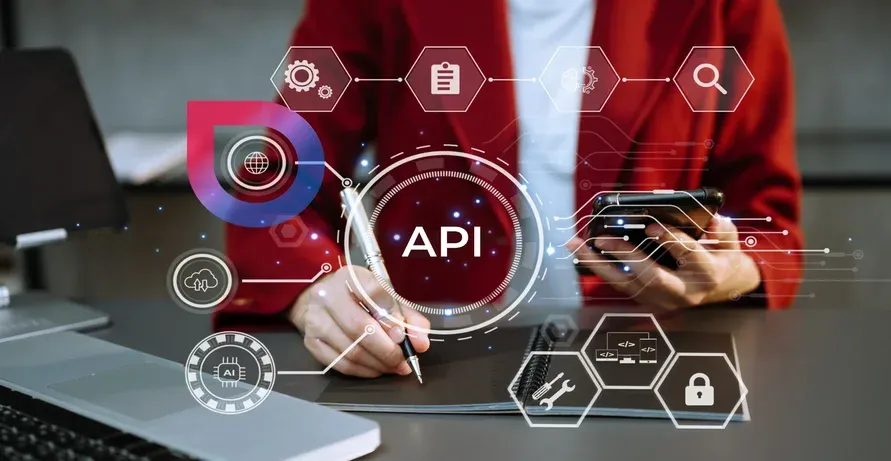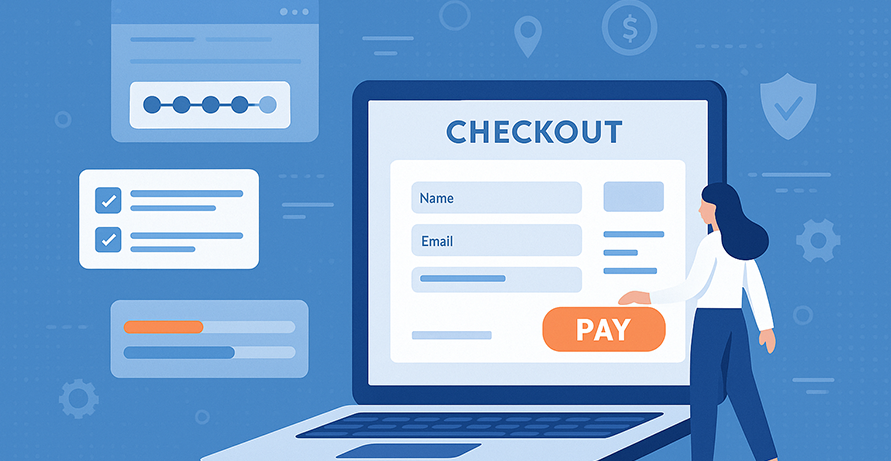The Power of API Integration in Custom Web Development

In today’s fast-paced digital landscape, businesses are constantly seeking ways to enhance their online presence. One of the most effective strategies is embracing API integration within custom web development. It might sound technical, but it holds the key to unlocking seamless web solutions that propel your business forward.
APIs (Application Programming Interfaces) act as bridges between different software applications. They enable communication and data exchange effortlessly. With the rise of various platforms and services, integrating these APIs into your custom web development projects can create a cohesive user experience while significantly boosting functionality.
Imagine seamlessly connecting your e-commerce platform with payment gateways or social media channels without any hiccups. That’s the power of API integration in action! By harnessing this technology, you not only improve operational efficiency but also deliver enhanced value to your users.
Let’s dive deeper into how API integration transforms custom web development and what it means for businesses looking to thrive in an interconnected world.
Benefits of API Integration for Custom Web Development
API integration brings a wealth of advantages to custom web development, allowing developers to connect different applications and services seamlessly, thereby enhancing functionality without starting from scratch.
- Enhanced Efficiency and Time Savings: By integrating APIs, businesses can access third-party tools that offer specialized features. This saves time and reduces development costs significantly, as teams can leverage existing solutions instead of building every feature in-house.
- Improved Scalability: Scalability is another key benefit of API integration. As your business grows, integrating new APIs becomes easier, enabling you to add additional services or features without major disruptions to your infrastructure.
- Fostering Innovation: API integration fosters innovation by allowing companies to experiment with various technologies quickly. Developers can test new ideas and implement them into their projects efficiently, enhancing the product’s adaptability and competitiveness.
- Seamless User Experience: User experience improves significantly when multiple systems work harmoniously through APIs. Customers enjoy smoother interactions while navigating your platform, resulting in higher satisfaction and increased user engagement.
- Cost-Effective Solutions: API integration reduces the need for extensive custom coding, thereby lowering overall development costs. It also shortens the time-to-market for new features, giving businesses a competitive edge.
Popular APIs Used in Web Development
When diving into custom web development, understanding popular APIs is essential. They serve as gateways to a world of functionality and integration.
Google Maps API
This API enhances websites by embedding interactive maps, providing users with a seamless navigation experience.
Twitter API
The Twitter API allows developers to incorporate real-time social media updates and sharing features directly into their web applications, fostering greater engagement.
Stripe API
For e-commerce solutions, Stripe shines with its secure payment processing capabilities, making transactions intuitive and user-friendly.
Spotify Web API
This API offers developers access to a vast music library, allowing them to integrate audio content that resonates with users’ interests.
Case Studies: Successful Implementation of API Integration in Custom Web Development
Travel Industry: Seamless Booking Platform
A custom travel booking platform integrated multiple APIs to consolidate flight, hotel, and car rental options. The platform provided users with a seamless experience, from search to booking, increasing customer satisfaction dramatically.
E-Commerce Sector: Payment Processing Integration
A retail company incorporated a payment API into its custom web development framework. This allowed for secure, quick transactions and improved user trust, leading to a significant boost in sales conversions.
Healthcare Industry: Telehealth System
A healthcare provider integrated an API that connected patient management systems with telehealth services. The result was improved patient outreach, streamlined communication between providers and patients, and enhanced data accessibility.
These examples highlight how diverse sectors leverage API integration to transform their operations while providing optimal user experiences.
Challenges and Solutions for API Integration
API integration can be a complex journey, and developers often face challenges that can hinder progress. Here’s how to address some of the most common obstacles:
Inconsistent Documentation
Inadequate API documentation can lead to confusion and delays during the integration process. Solution: Ensure thorough research and utilize platforms, which offer centralized documentation and integration support.
Lack of Standardization
Different APIs may follow varied standards, complicating development. Solution: Adopt tools that standardize API interactions and employ middleware that simplifies data formatting.
API Versioning Issues
If an API provider updates their service, it could disrupt existing functionalities. Solution: Implement version control strategies and keep your APIs up to date by leveraging platforms that offer update notifications and backward compatibility.
Security Concerns
Data security is paramount during API integration. Solution: Implement robust authentication mechanisms such as OAuth 2.0 and token-based systems to protect sensitive information.
Performance Bottlenecks
Slow API responses can impact your application’s performance. Solution: Monitor API performance using real-time analytics tools and caching solutions to optimize response times.
Future Trends in API Integration for Web Development
As technology evolves, API integration is set to embrace advanced features that enhance custom web development.
GraphQL Adoption
GraphQL is gaining traction as a more efficient alternative to REST APIs, allowing developers to request only the data they need, improving performance and reducing payload sizes.
Microservices Architecture
Breaking down monolithic applications into smaller services interconnected through APIs is becoming the norm. This approach increases flexibility and accelerates deployment cycles.
AI-Driven Integrations
Artificial intelligence (AI) is expected to play a pivotal role in API-driven web solutions. By leveraging machine learning algorithms, businesses can create smarter, adaptive interfaces based on user behavior.
Enhanced Security Measures
With the rise in cyber threats, innovations such as API gateways, rate limiting, and token-based authentication are essential for maintaining secure connections across platforms.
Conclusion
API integration is transforming the landscape of custom web development. By leveraging APIs, developers can create seamless web solutions that enhance functionality, user experience, and operational efficiency. The benefits are clear—improved scalability, faster development, and access to a wealth of third-party resources.
Through real-world case studies, we’ve seen how businesses across various industries have successfully implemented API integration to achieve remarkable results. However, challenges such as documentation inconsistencies and security concerns must be addressed with strategic planning and robust testing protocols.
Looking ahead, trends such as GraphQL, microservices architecture, and AI-driven APIs are set to redefine the future of web development. By embracing the power of API integration, businesses can unlock a world of possibilities and remain competitive in the ever-evolving digital landscape.








